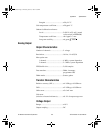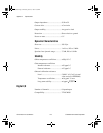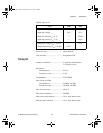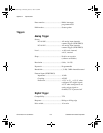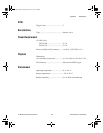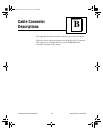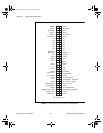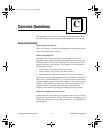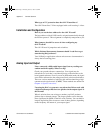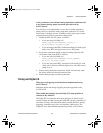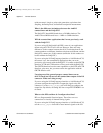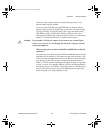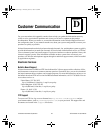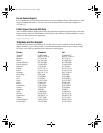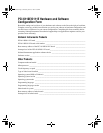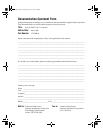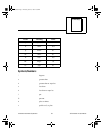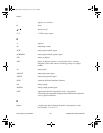
Appendix C Common Questions
©
National Instruments Corporation C-3 PCI-6110E/6111E User Manual
Can I synchronize a one-channel analog input data acquisition with
a one-channel analog output waveform generation on my
611X E board?
Yes. One way to accomplish this is to use the waveform generation
timing pulses to control the analog input data acquisition. To do this,
follow steps 1 through 4 below, in addition to the usual steps for data
acquisition and waveform generation configuration.
1. Enable the PFI5 line for output, as follows:
• If you are using NI-DAQ, call
Select_Signal(deviceNumber, ND_PFI_5,
ND_OUT_UPDATE, ND_HIGH_TO_LOW)
.
• If you are using LabVIEW, invoke Route Signal VI with signal
name set to PFI5 and signal source set to AO Update.
2. Set up data acquisition timing so that the timing signal for A/D
conversion comes from PFI5, as follows:
• If you are using NI-DAQ, call
Select_Signal(deviceNumber, ND_IN_CONVERT,
ND_PFI_5, ND_HIGH_TO_LOW)
.
• If you are using LabVIEW, invoke AI Clock Config VI with
clock source code set to PFI pin, high to low, and clock source
string set to 5.
3. Initiate analog input data acquisition, which will start only when
the analog output waveform generation starts.
4. Initiate analog output waveform generation.
Timing and Digital I/O
What types of triggering can be hardware-implemented on my
611X E board?
Hardware digital and analog triggering are both supported on the
611
X
E board.
What added functionality does the DAQ-STC make possible in
contrast to the Am9513?
The DAQ-STC incorporates much more than just 10 Am9513-style
counters within one chip. In fact, the DAQ-STC has the complexity of
more than 24 chips. The DAQ-STC makes possible PFI lines, analog
triggering, selectable logic level, and frequency shift keying. The
DAQ-STC also makes buffered operations possible, such as direct
PCI_E.book Page 3 Thursday, June 25, 1998 12:55 PM



